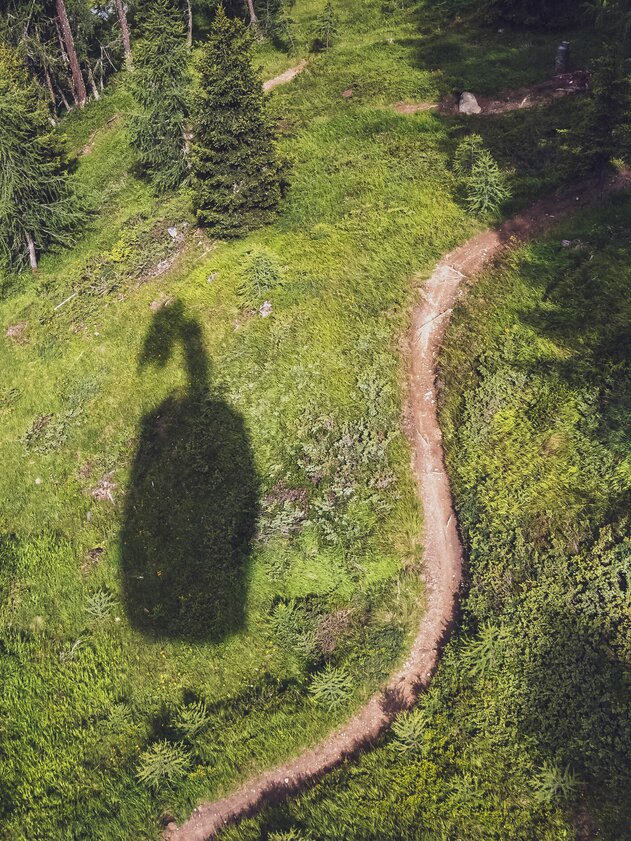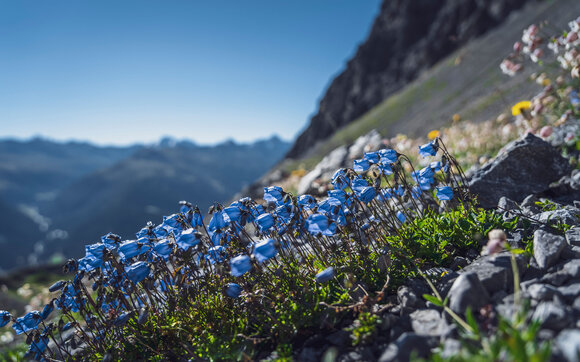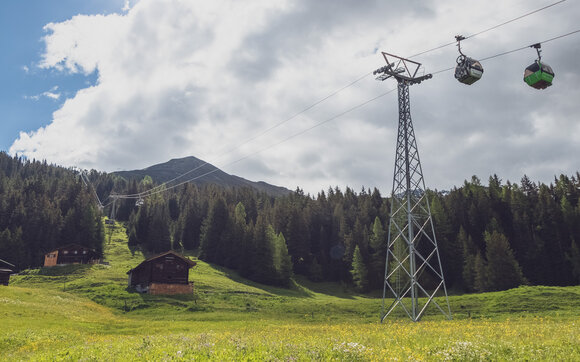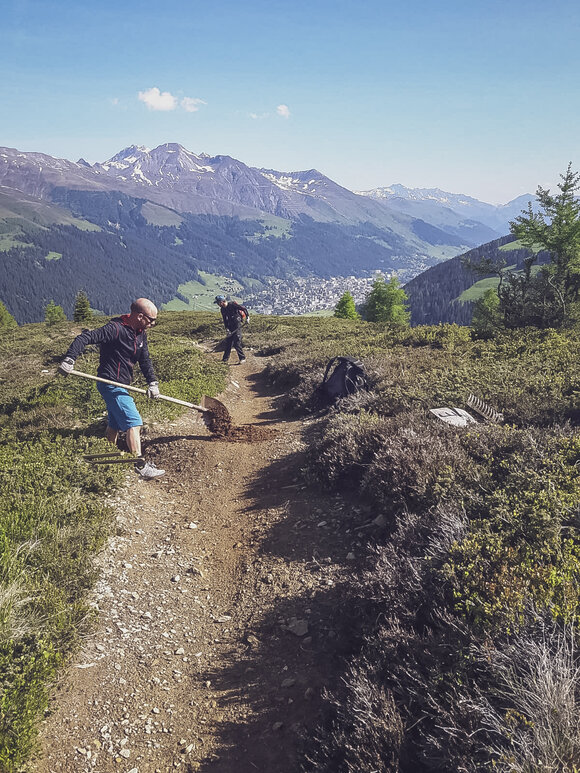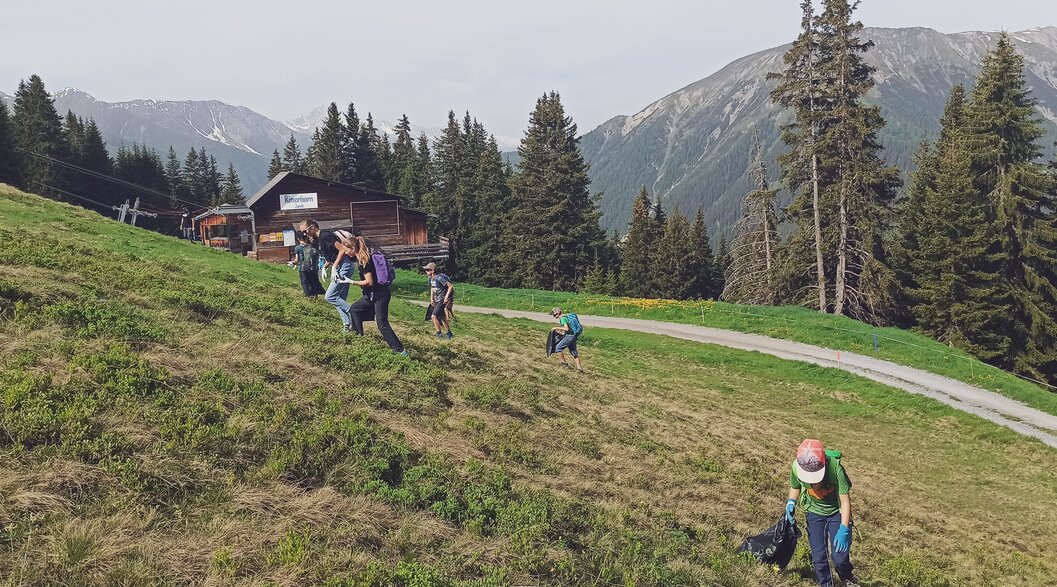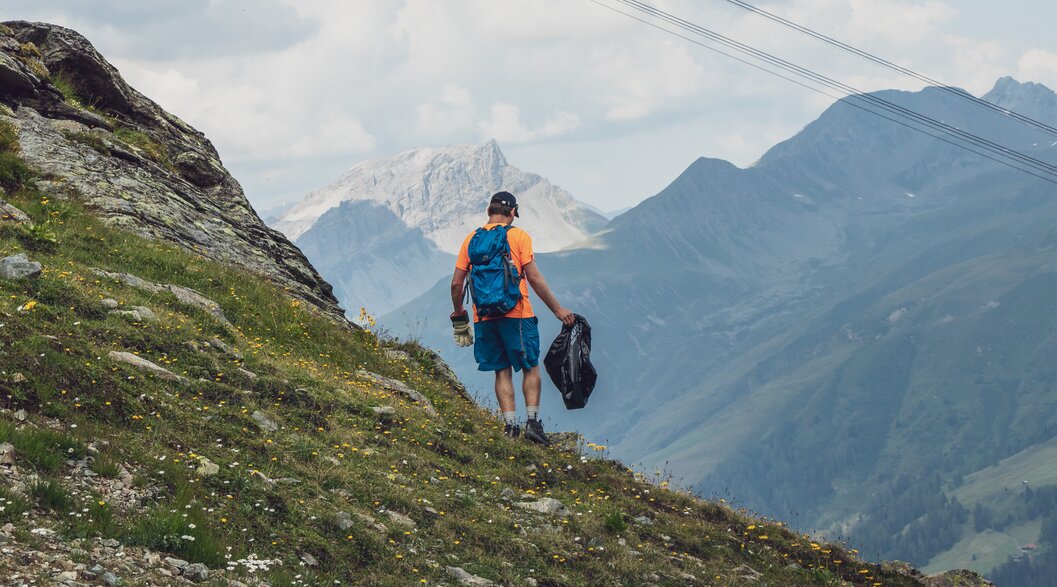The environment in Davos Klosters Biodiversity, nature and the landscape
The environment encompasses everything that surrounds us, including nature, and has a significant impact on our living conditions. To ensure that winter and summer sports can be enjoyed on Jakobshorn, Parsenn, Pischa, and Rinerhorn, constant investments in mountain transport and infrastructure are necessary.
In return, we are committed to working together with landowners and the alpine economy to safeguard and promote our natural landscape. During the winter, cable cars are crucial in developing and providing access to the mountain landscape. In summer, farmers manage and utilise meadows and pastures. What’s more, tourists are increasingly drawn to the mountains and unspoiled nature during the summer months.
Our additional environmental projects are geared towards protecting nature and preserving the alpine landscape. Our goal is to ensure sustainable and gentle use of the region’s resources so that it can continue to exist as a recreational area and habitat for generations to come.

